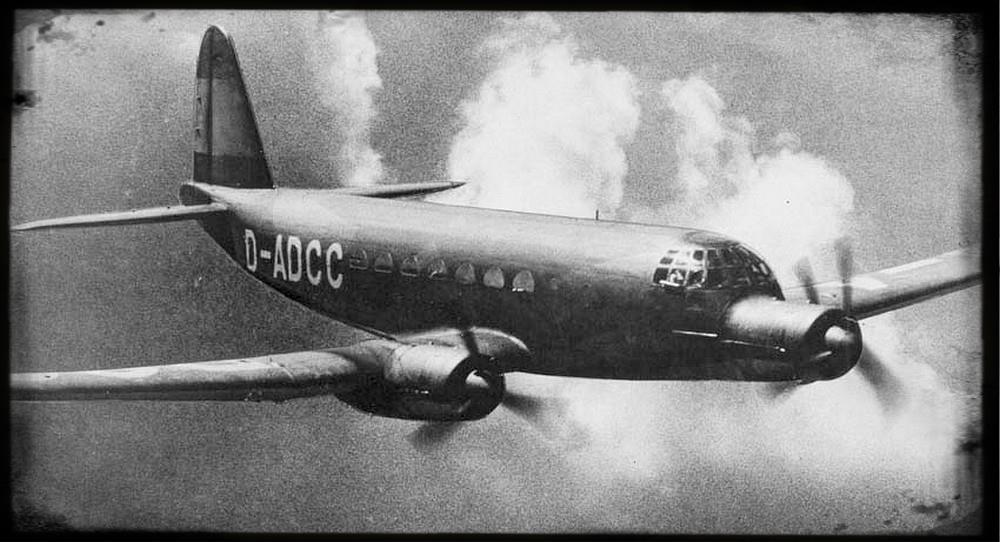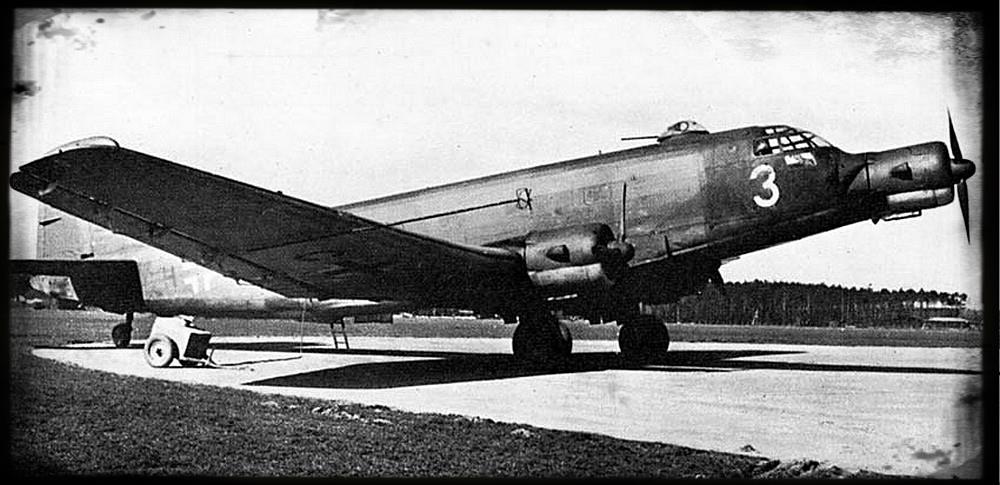Junkers Ju252 / Ju352
see also: Junkers Ju252 Production List / Junkers Ju252 Model Kits
transporter and passenger aircraft, cantilever monoplane, smooth metal, designed by Eichholtz
EF77: 21 passengers, projected in 1938, not built
Ju252: 32 passengers, f/f 05.06.1942, 15 built
Ju352: 50 military passengers, f/f 18.08.1943, 44 built

Junkers Ju252-V1 Prototype
In 1938 Junkers started to think about a further developed Junkers Ju52. The new design was designated as EF77 with smooth metal surface instead of the corrugated technology of the Ju52 and with a retractable undercarriage. Like the Ju52, the EF77 was designed for 21 passengers and it was equipped with three engines. But the RLM rejected this design due to the relative small advantages against the current Ju52s, which resulted from the wing design.
In 1939 the EF77 was completely reviewed by Junkers. The principle layout of the fuselage was taken from the EF77 design, but a new wing was added. The designator was now changed to Ju 252. The cabin should be pressurized for altitudes of 8000 meters. In September 1939 the development was stopped by RLM.
After the occupation of France, Scandinavia and the Balkan, the development of the Ju 252 was restarted. While the EF77 and the initial Ju252 developement of 1939 was an exclusive civil design, now the Ju 252 had to cover military and civil aspects. Lufthansa and Luftwaffe asked for larger capacity. Therefore the Ju252 was again completely changed. A lot of the development work was now performed at Letov in Prague. Also the Fokker offices were engaged in some development parts of the Ju 252. The 1940 design satisfied Lufthansa and Luftwaffe and an order for three initial prototypes was placed in June 1940.
As the priority for the Ju252 transporter aircraft was very low, the first prototype performed its first flight on June, 5th 1942 with Joachim Matthies. When the flight tests and some military test missions were finished, the RLM placed an order for 25 Ju 252 military transporters, which were equipped with a boarding ramp in the floor of the aircraft. Later this was reduced to 12 aircraft, which were finally delivered through 1942 and 1943. A Ju252W was also designed as seaplane version, but only a windchannel model was built before the complete Ju252 was stopped.

Junkers Ju352 Transport Aircraft
Due to shortage in material supplies in 1942 the RLM asked Junkers to change the Ju252 design to combined materials. The new design got a metal frame and wooden or textile surfaces. As Junkers had no experiences about the utilization of wood or textile in aircraft designs, the further development work was transfered to Siebel. But later the development work was retransfered to Junkers, where the new designation Ju 352 was introduced. The wing was built from wooden materials, while the fuselage was designed with textils. Only the cargo ramp, the rear fuselage and the cockpit parts were made from metal materials. A significant outside change was made at the tail unit, which became larger than that of the Ju252. The Ju252V1 was used as a test aircraft for the new materials. After the modifications the aircraft was named Ju252V1/1, which later was changed to Ju352V0
The first flight of that aircraft was performed by Matthies on August, 18th 1943. A total of 44 aircraft were built as productional series A0 and A1 A further development was intended as Ju352B1, with BMW801 or Jumo 211, but not completed. The Ju352 production was ceased in September 1944 due to the war situation in Germany. After WWII a small production line was kept by Letov, where most of the Ju352 were built.
Technical Data:
| Aircraft | year | engine | length in m | span in m | wing area im sqm | net weight in kg | payload in kg | seats | speed in km/h | range in km |
|---|---|---|---|---|---|---|---|---|---|---|
| Ju77 (EF77) | 1938 | 3 x Jumo 132 | 21,00 | 24,25 | n.a. | n.a. | n.a. | ?+21 | n.a. | 1500 |
Weblinks:
- Airwar.ru - Ju252 Story, Data, Photos
Airwar.ru - Ju352 Story, Data, Photos - Wikipedia.org - Ju252 Story, Data
Wikipedia.org - Ju352 Story, Data, Drawings - Fliegerweb.com - Ju252 Story, Data
- MilitaryFactory.com - Ju252 Story, Data
- Flugzeug-Lorenz.de - Ju252 text from "Kennzeichen Junkers"
- Youtube.com - Ju252 inflight Videos
Literature:
- no dedicated literature
introduced Jul 1996, transfered Aug 2017
http://hugojunkers.bplaced.net/
contents last updated 12 Jul 2003

